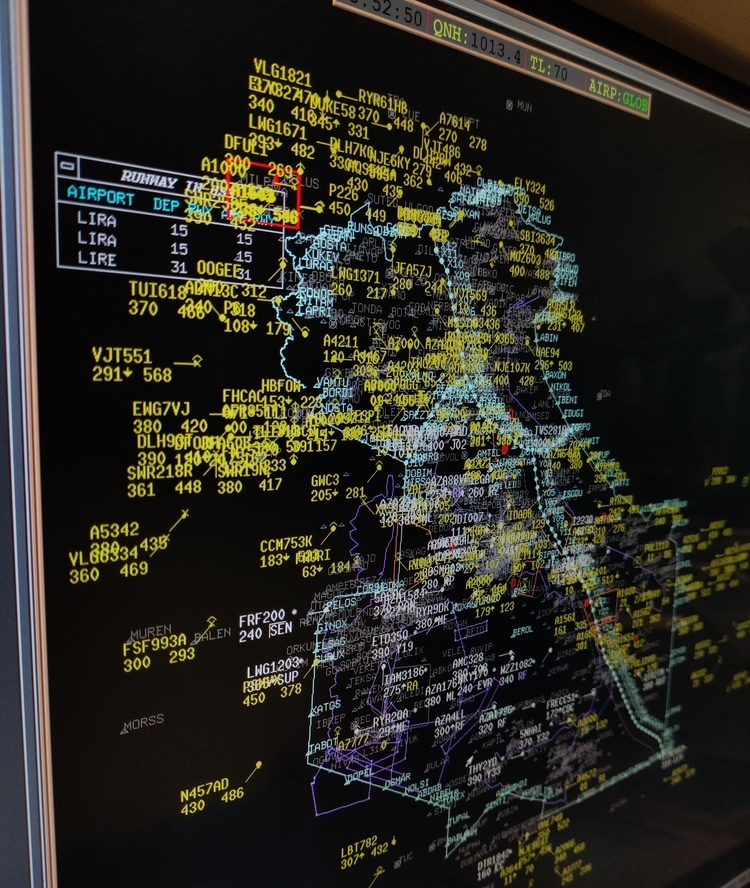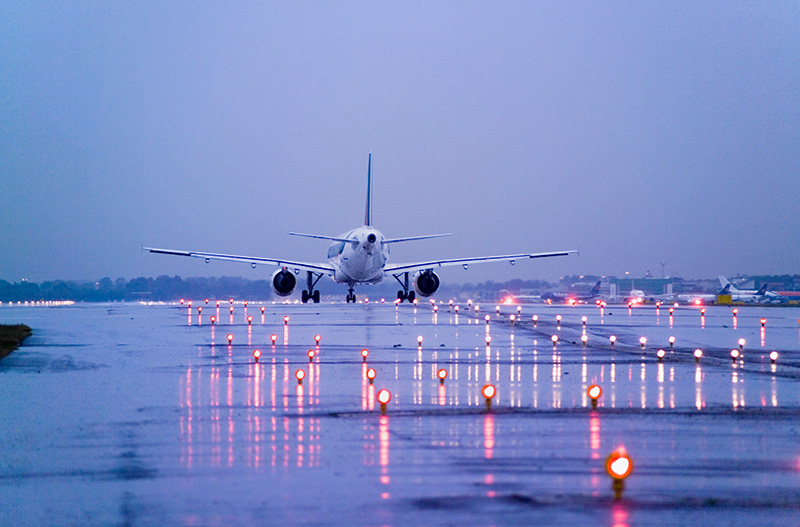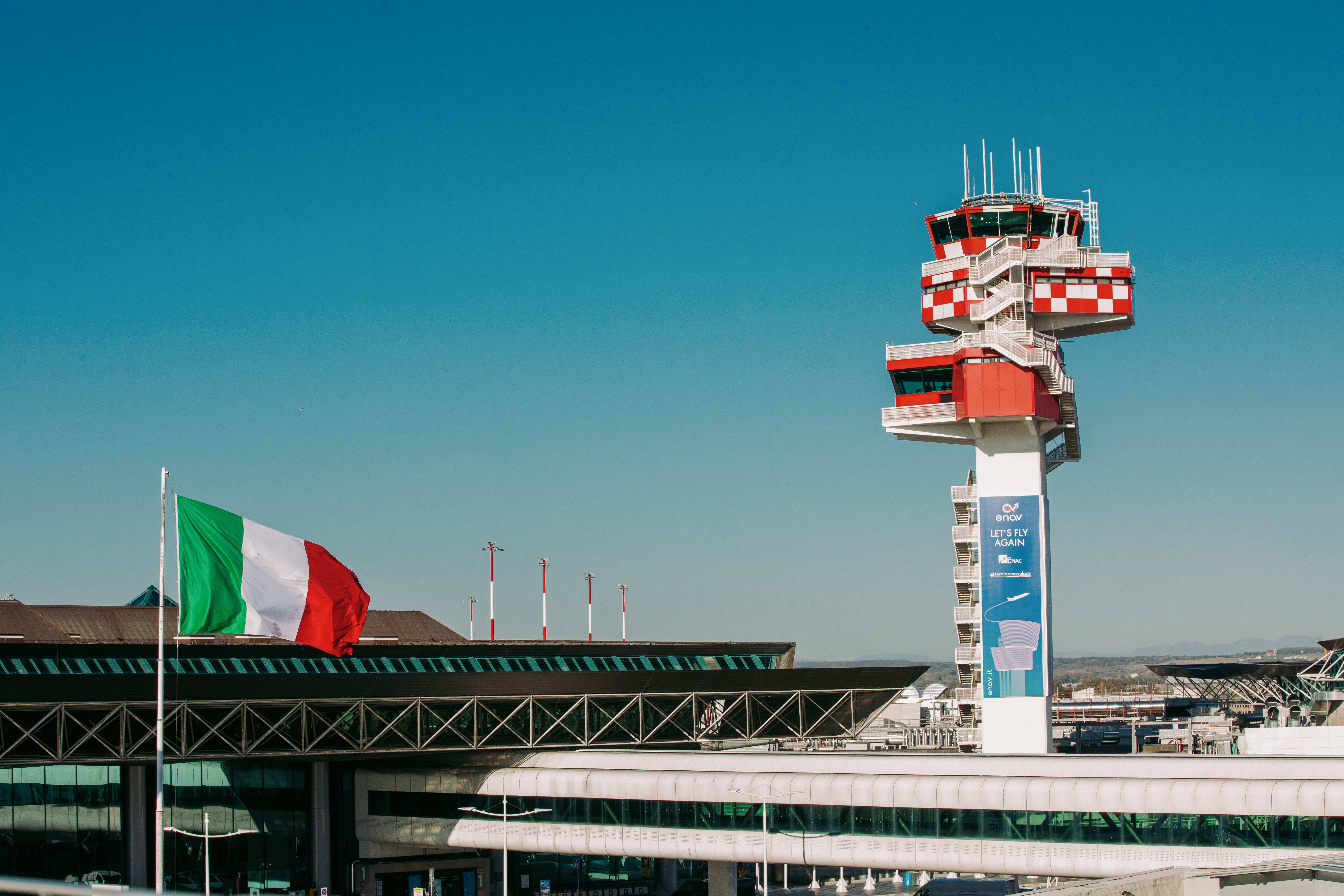By optimizing routes, we promote the reduction of aircraft fuel consumption and emissions and lead the way with our contribution to "Climate Action" (SDG No. 13)
PROJECTS TO REDUCE CO₂ EMISSIONS
Flight Efficiency Plan (FEP)
Developed in the last decade, the Flight Efficiency Plan is a multi-year plan of measures that form part of the EU’s Single European Sky programme. It seeks to create an airspace structure that optimizes the aviation network. The objective of the FEP is to contribute to the reduction of customer management costs and environmental impact and to introduce a cutting-edge navigation system in Italian airspace.
Results:
- increasingly efficient flight profiles;
- direct routes with positive effects on costs, consumption and harmful emissions;
- reduction of flight times with consequent reduction of management costs.

Free Route Airspace Italy (FRAIT)
Free Route Airspace Italy (FRA-IT) is an innovative procedure that allows all overflight aircraft, at an altitude above 6,500 meters, to cross the Italian skies with a direct route, no longer referring to the route network, which, from that altitude, has been completely eliminated.
In December 2016, ENAV was the first among the five major European service providers to implement the Free Route at 9,000 meters, as required by the Single European Sky European regulation that made it mandatory for all European states stating from January 1, 2022.
According to the provisions of the EU regulation, by December 2025 all member states will have to comply with the 6,500-meter altitude. ENAV has brought forward the commissioning to March 21, 2024.
Below are the savings (the years 2020 and 2021 are conditioned by the reduction in air transport activity, due to COVID-19):
- 2017: saving 30,000 tons of fuel, equivalent to 95,000 tons of CO₂.
- 2018: saving 43,000 tons of fuel, equivalent to 135,000 tons of CO₂.
- 2019: saving 53,000 tons of fuel, equivalent to 167,000 tons of CO₂.
- 2020: saving 29,000 tons of fuel, equivalent to 91,000 tons of CO₂.
- 2021: saving 48,000 tons of fuel, amounting to 152,000 tons of CO₂.
- 2022: saving 65,000 tons of fuel, equivalent to 205,000 tons of CO₂.
- 2023: saving 72,000 tons of fuel, equivalent to 229,000 tons of CO₂.
- 2024: saving 94,000 tons of fuel, equivalent to 297,000 tons of CO₂.
Overall, from the introduction of Free Route to the end of 2024, the benefits achieved in terms of flight efficiency can be quantified as 110 million fewer kilometers flown, resulting in a reduction in fuel consumption of 435,979 tons and lower CO₂ emissions of more than 1.3 million tons.

Airport Collaborative Decision Making (A-CDM)
Airport Collaborative Decision Making (A-CDM) is an operational procedure implemented on major Italian airports through a cooperation between ENAV, Airport Managers and Eurocontrol's Network Manager (NMOC).
The objective of the procedure is to increase the efficiency and resilience of airport operations by optimizing the use of resources through a continuous exchange of information.
Through the technology platform that supports A-CDM, information of departing and arriving flights is exchanged among all stakeholders involved. Based on the information received from airlines, the platform is able to calculate the appropriate start-up time for all flights in order to ensure the fastest taxi route and avoid waiting before departure.

Arrival Manager (AMAN)
The Arrival Manager (AMAN) system supports the Air Traffic Controller (ATC) in managing the arrival sequence of aircraft in heavy traffic conditions. This system tells the controller the optimal arrival sequence for aircraft calculated to allow reduction of the interval between successive approaches. This reduction saves distance to be flown for each aircraft and enables both a reduction in fuel - resulting in less atmospheric emissions by airlines - and a reduction in flight time to the benefit of passengers.
To produce the expected benefits, the AMAN system must interact with several systems, including primarily the Flight Data Processing System (FDPS) from which it derives flight plan information for each individual aircraft, and the Radar Data Processing System (RDPS) for real-time updating of the position of individual aircraft.
During 2023, AMAN was also implemented at Milan ACC for optimizing approach sequences at Milan Malpensa, Milan Linate, and Bergamo Orio al Serio airports. This system had been implemented during 2022 at Rome ACC, for the management of flights arriving at Rome Fiumicino airport.

| Benefits generated by AMAN in 2023 (Rome Fiumicino) | |
|---|---|
| Fuel savings enabled | 366.2 t |
| Emission saving enabled | 1,153.4 tCO₂ |
